Resources
Type: Factsheet
Showing 41 - 60 of 76
76 results found

A look at the considerations and actions that Parties must make to come up with an optimal HFC phase-down strategy.

The benefits and advantages of quick action to avoid costs and achieve target environmental results are explained in this fact sheet.

The interaction and linkages of the Kigali Amendment with other existing policy measures is described in this fact sheet

This fact sheet discusses the various barriers to the successful implementation of the Kigali Amendment

This fact sheet gives guidance on the impact of using flammable HFC alternatives.

This fact sheet discusses some of the technical issues related to the operation of air-conditioning systems at high / extremely high ambient temperature

A quick run-through of the different stakeholders that each Party must engage vis-à-vis the Kigali Amendment to ensure its successful and efficient implementation.

This fact sheet provides a list of the definition of terms and acronyms used in the Kigali Fact Sheet series as well as links to other useful information.

This fact sheet shows the importance of understanding how ‘tonnes CO2 equivalent’ is calculated and gives the GWP values for substances controlled under the Kigali Amendment.

An overview of the different sectors and markets where fluorocarbon chemicals and blends are used.

An introduction and general overview of the Kigali Amendment and the changes that will come with regard to the phase-down of HFCs.

This fact sheet summarises and highlights the main elements of the Amendment of particular interest to countries operating under Article 5 of the Protocol (Article 5 Parties).

In 2016, the Montreal Protocol was amended to phase-down the production and consumption of hydrofluorocarbons (HFCs) which are commonly used alternatives to ozone depleting substances.

Under the Montreal Protocol on Substances that Deplete the Ozone Layer, Article 7 of the Protocol requires all Parties, both developing countries (also called Article 5 countries) and developed countries, to provide statistical data on an annual basis, on various issued related to trade and production of ozone-depleting substances (ODS),… read more

The RAC sector represents a major share of energy use in most developing countries as RAC appl i cat ions consume large amounts of electricity for cooling requirements, resulting in a rapid increase in energy consumption in the commercial and residential sectors of many countries.

Table of common products and equipment containing or reliant on HCFCs

Certification is the means by which a person (or enterprise), as a result of training, education, external review and assessment, receives official approval of being able to competently complete a job or task. Certification can be a legal requirement or a measure undertaken voluntarily for professional advantage. Certification schemes which are… read more

As part of its work in providing assistance to developing countries to fulfil their commitments under the Montreal Protocol on Substances that Deplete the Ozone Layer, the UNEP DTIE OzonAction Compliance Assistance Programme (CAP) launched the ‘Informal Prior-Informed Consent’ (iPIC) mechanism in 2006. This initiative was developed in order to… read more

The number of single component refrigerants with different thermodynamic properties suitable for different types of equipment is limited. Growing demand for refrigeration and air-conditioning with diversified applications has led to a continued search for suitable refrigerant blends. A number of such blends have been developed by mixing two or… read more

1. Ozone Depleting Potential, Montreal Protocol ‘reporting’ values, Montreal Protocol Handbook, 2012. 2. Global Warming Potential, WMO Scientific Assessment Report, 2014 3. A1 = Lower toxicity, no flame propagation (non-flammable); B1 = Higher toxicity, no flame propagation (non-flammable); A2 = Lower toxicity, flammable 4. Code 2903.79 covers… read more
Showing 41 - 60 of 76





